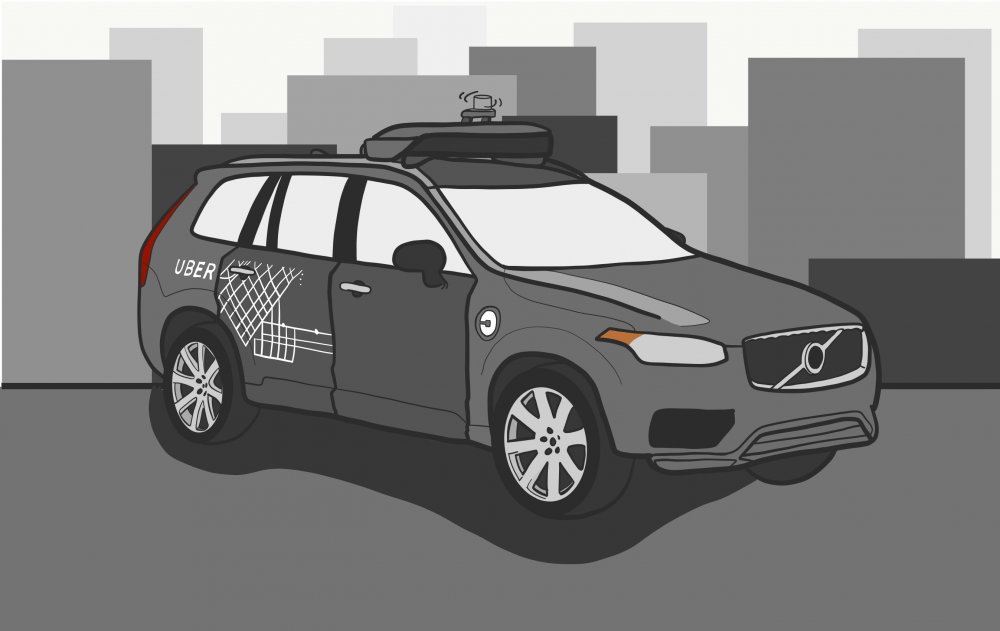The National Transportation Safety Board found that the woman operating the automated driving vehicle owned by Uber is mostly to blame for the crash that struck and killed 49-year-old Elaine Herzberg on March 18, 2018.
The report, which was released earlier this month, said that the woman operating the vehicle was visually distracted by watching "The Voice" on her cellphone at the time of the crash.
The crash took place near ASU's Tempe campus on Mill Avenue and Curry Road.
“The failure of the vehicle operator to monitor the driving environment and the operation of the automated driving system" was the probable cause of the crash, the report said.
The report also said that Uber’s inadequate safety risk assessment procedures also contributed to the crash, including its vehicle not being able to account for jaywalkers as well as rarely monitoring the behavior of vehicle operators.
In a statement, Nat Beuse, head of safety for Uber Advanced Technologies Group said, “We deeply regret the March 2018 crash that resulted in the loss of Elaine Herzberg’s life, and we remain committed to improving the safety of our self-driving program.”
Among the changes made since the crash include improved operator training as well as changes to reduce system latency and enhance the detection of pedestrians and cyclists. They will also program the cars to drive more defensively, according to a one-pager from Uber.
Devon McAslan, a postdoctoral research associate researching automated vehicle planning at ASU, said not to let this one incident influence opinions on automated vehicles.
“I do think that on this issue, Uber is probably an outlier and I would argue that a lot more of the companies have a lot better, not just track records, but at least a greater consideration of general public safety and wanting to make the roads safe and operate their vehicles safely,” McAslan said.
McAslan believes that a larger density of automated vehicles will be on the roads a lot sooner than people typically think, possibly in the next 3 to 5 years.
The challenge, amplified by Uber’s crash in March of 2018, is getting and maintaining the public’s trust that these vehicles are safe so people want to ride them.
McAslan believes two of the ways to gain the public’s trust is through the federal government passing safety standards legislation and automated vehicle companies carrying out pilot projects and interactive opportunities with the vehicles.
Local Motors, a company using the self-driving shuttle "Olli'’in cities across the globe, has pilot projects and interactive opportunities readily available, including in Chandler.
Jay Rogers, CEO and co-founder of Local Motors, said that “you can experience the assembly and the riding of a vehicle” in the Chandler micro-factory, noting to check in ahead of time.
The Olli vehicle, which holds around 12 passengers, has been tested on university campuses before, including Ohio State University, and is environmentally friendly because they're fully electric.
“Right now we’re about 80% by volume of the vehicle 3D printed, and they’re just glass and motor and battery that are not 3D printed because they just don’t make sense to 3D print,” Rogers said.
Local Motors is not in the business exactly like Uber, however, as they are not looking to develop an automated vehicle fit for the highway.
“We really started focusing on the campus mobility market which is very different than Uber, Rogers said. "We started focusing on low-speed campus mobility and so for us this is not about a highway car."
Pilot projects like these are still valuable to gain back public trust after a high-profile accident like Uber’s last year, McAslan said.
Automated vehicles like Olli can still be beneficial despite only going 8-9 mph. In places like Manhattan, the vehicles could be helpful if street lights become responsive to autonomous vehicles when no oncoming traffic is on the way, said Rogers.
“The fast speed on average in Manhattan when everything is going well is 8-9 mph whereas rush hour is 2 miles an hour or less,” said Rogers.
The importance of these self-driving shuttles lies within their ability to work within a transit environment and connect people to larger transportation systems, like a light rail or subway, said McAslan.
McAslan said that currently with no federal oversight. Automated vehicles can be programmed in several ways. He would be more comfortable with guidelines passed by the government.
“I’d feel better knowing that someone was watching these companies and making sure that they’re programming them all in the same way,” said McAslan.
Reach the reporter at baharr21@asu.edu or follow @bharris823 on Twitter.
Like The State Press on Facebook and follow @statepress on Twitter.




